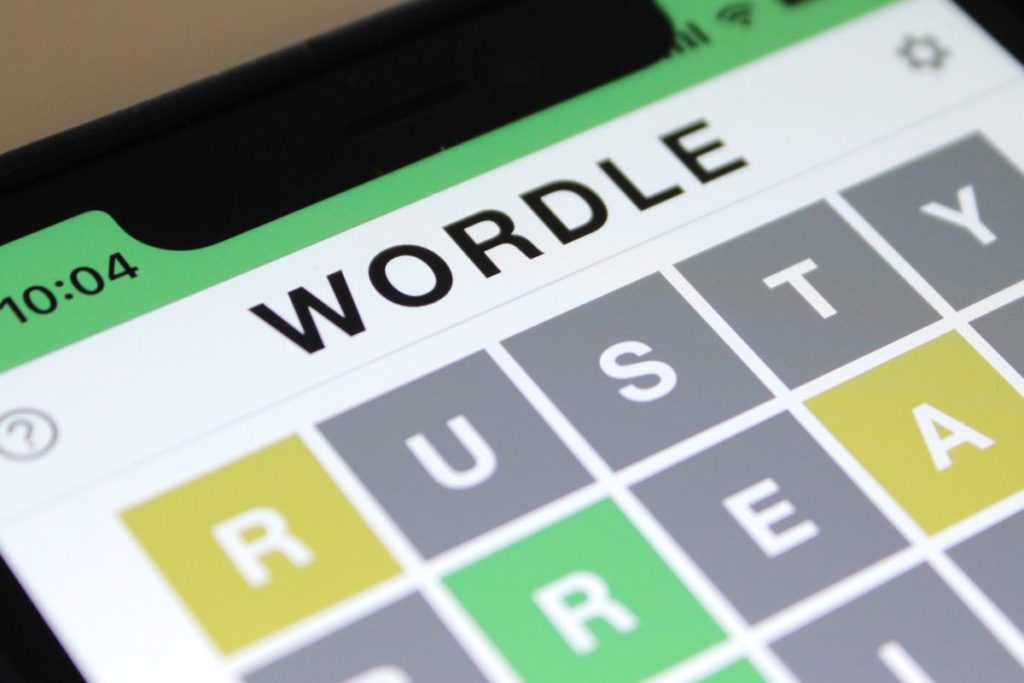
By Emily Hanson || Layout Assistant
If you’ve been on TikTok at all throughout the last few weeks, you’ve likely heard of or even played the game Wordle, which rose to popularity in early 2022. The game is reminiscent of multiple well-known and widely-loved word games to date, such as hangman and crossword puzzles, hence its close following of puzzle lovers and word enthusiasts across the internet. Wordle consists of a 5×6 grid and a keyboard with which players have six attempts to guess a new 5-letter word each day. For each guess, the game highlights the letters that are in the correct spot in the word with a green tile, the letters that are in the word but not in the correct spot with a yellow tile, and the letters that aren’t in the word at all with a gray tile. The player knows they’ve guessed the correct word when all five tiles are green, and each correct word maintains a streak that long-term players aim to keep as long as possible.
Josh Wardle (yes, the game’s name is a pun) is the original creator of the game; at first he made it for his partner, Palak Shah, who enjoyed the challenge. However, in October 2021, Wardle released Wordle to the public. This is why the game isn’t an app (so don’t go looking on the app store!), it’s actually a website at the domain https://www.powerlanguage.co.uk/wordle/. Early this year, Wordle went absolutely viral on TikTok and Twitter (it’s been getting increasingly difficult to avoid spoilers, so watch out), with fans across both platforms sharing their scores, how many tries it took them in a given day to win, and giving tips and tricks on the best ways to start to win the fastest. Lots of words have been suggested as the “best” starting word in Wordle, such as “SOARE,” “INPUT,” and commonly “ADIEU,” which has plenty of die-hard daily users. Others have argued that starting with a different word each day is part of the fun, as it makes it more likely to win on the first try. The algorithm of Wordle actually contains a list of 2,315 words that could be the correct answer, but its dictionary houses lots more words, so even some words that players enter could never be correct. Wardle doesn’t even know what word the algorithm will choose next, so even he can enjoy guessing the daily Wordle.
Lately, as Wordle’s fan base continues to multiply, it seems the one-game-a-day format isn’t enough. This has spawned plenty of spoof or copycat games which have a similar algorithm. Some of these include WordleUnlimited (giving, as it sounds, unlimited Wordle games a day), Letterle (which ridiculously functions the same way except with one LETTER a day), or even my favorite, Taylordle (a Taylor Swift-themed Wordle with each new word having a relation to the popular singer). Due to this growth (millions of players per day!), Josh Wardle made the tough decision to sell Wordle to the New York Times on Monday, January 31st. Now players aren’t sure exactly how the game will be available in the future, even though Wardle has assured that streaks will remain intact and the game will be free for existing users. Players are hoping that the NYT doesn’t put Wordle behind a paywall, similar to their popular daily crosswords. The NYT mini crossword, a daily smaller crossword puzzle, is free to play each day but fans must pay to access the archives—which is the hope for Wordle, too.
Fans of Wordle, hang in there! The game should be available, and hopefully as time goes on, more words are added to the algorithm so the fun won’t end.
First-year Emily Hanson is a Layout Assistant. Her email is ehanson@fandm.edu.